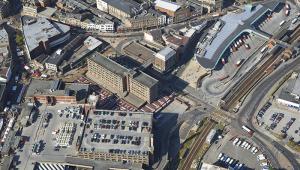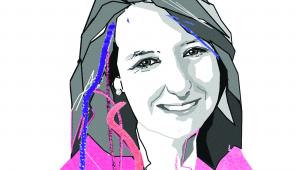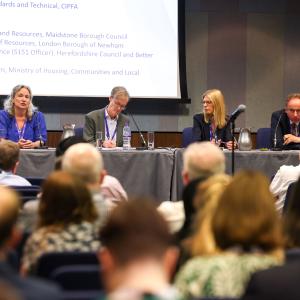
Look out of the window. What do you see? Physical aspects probably stand out the most – buildings, maybe. Or perhaps natural features if you can see trees or a river, or you might be looking down or up – or maybe at – a hill. What about people? Are there many? Who are they? Where have they come from? What characteristics do they share with one another, and in what ways are they different? What experiences shape their lives? These are all characteristics that policymakers and budget-setters need to consider when making decisions about their area. There is a word encompassing all of them, and hardly a conversation about policy passes these days without it: place.
Place has been, in one form or another, a major consideration in policy for as long as there has been policy at all, but it has risen in public finance circles to further, explicit prominence in the past few years. Place is everywhere at the moment; at every conference, in every discussion and every presentation (indeed, even filling the pages of every magazine, it seems, too).
It is important, though, to work out what exactly it means for people in the profession, and to explore how the public sector can use it to drive good decisions that make a difference for the communities it serves.
First, what does it mean? “Place is the physical environment that surrounds us, and the relationship between that and the people who live in, work in, learn in or visit that environment,” says John Howie, service manager of place and health at Public Health Scotland.
“When I speak about people, I think about different stages of life and different populations: factors such as ethnicity, disability, sexuality and gender – place is a complex dynamic.
“Place also is not fixed. It changes based on the time of day and time of year. Take Buchanan Street in Glasgow, for example. Compare when the Commonwealth Games were on and being surrounded by people to, say, on a cold winter’s night when you’re walking alone. Now think of the difference if you are male or female. It’s the same location but feels like a different place depending on the circumstances.”
It seems like common sense that decisions should be made with these factors in mind. However, as always, it’s not that simple. A lot of power and money are centralised (this is more true in some countries than others), so the people making decisions are often making them without a direct interest in the place(s) they affect, and without specific local understanding that would benefit them.

Geography lessons
When thinking about place in depth, it might help to go back to basics. In 2014, geography teacher Denise Freeman and education researcher Alun Morgan outlined a ‘three lamps’ model for teaching school students about place.
In their model, three lamps illuminate different aspects of a place to provide a framework to cover different facets:
Natural science/positivist. Focus on the location and features of a place. What is the landscape like? How large is the settlement? These are more objective truths.
Social science. Consider human-environment interactions, both socioeconomic and political. What is the local economy like, and how does it affect people?
Humanistic/interpretivist. Possibly the most subjective, this lamp illuminates the ‘sense’ or meaning of a place to people.
Do they really care?
“Some leaders are place-based in that they care about the place, and the other kind are what I call ‘placeless’ leaders, who don’t necessarily need to care about the place,” says Robin Hambleton, emeritus professor of city leadership at the University of the West of England. “The former understand place partly because they care about it. They often see things in the round precisely because they are place-based, [while] those in Whitehall are often forced into their silos so they can’t see the problems they need to deal with fully.”
The argument is that because problems are interconnected, someone with a geographically wider view of a specific issue might struggle to deal with that problem in a specific place. A person working on national policy might spot a local trend from data, but would not easily be able to fix the problem without policy levers affecting the wider determinants of that problem. Things are rarely simple.
Hambleton believes the problem of placelessness has become worse. “Multinational companies and globalisation have left communities behind. By being so neglectful of place, they have smashed many to bits. We can see the way the power of place has been eroded by policy, too. The Rates Act 1984 [which set controls on councils’ tax-raising powers] removed the right of local citizens to set the level they tax themselves at. That completely undermines local democracy. It doesn’t happen in other western democracies.”
Hambleton worked with erstwhile Bristol mayor Marvin Rees on the Bristol One City Approach (leading to the Bristol One City Plan), which defined a vision for the city by 2050 and set year-by-year goals across six themes: children and young people; economy and skills; environment; health and wellbeing; homes and communities; and transport. Rees would hold meetings with all kinds of public sector organisations, businesses and charities working in Bristol to discuss issues affecting the city.
“The idea is that you don’t govern a place from city hall; your role is to orchestrate the whole city – the whole ‘place’,” says Hambleton. “The state is part of the solution, but a lot of really important figures who bring additional perspectives are outside the state, and the collective spending power of all those actors is really quite significant.”
Place toolkit
The Place Standard is a tool developed by a partnership between the Scottish Government, Public Health Scotland and Architecture & Design Scotland in 2015. It is aimed at helping to draw a full picture of the quality of a place in order to identify areas that might be improved.
Public Health Scotland’s John Howie tells PF: “When it was being designed, it was answering the questions of how we break down place into its various components and how [they] relate to different age groups and populations.’”
The tool sets out 14 key areas to structure conversations about place. It deals with physical and social elements.
Those areas are:
- Moving around
- Public transport
- Traffic and parking
- Streets and spaces
- Natural space
- Play and recreation
- Facilities and services
- Work and local economy
- Housing and community
- Social interaction
- Identity and belonging
- Feeling safe
- Care and maintenance
- Influence and sense of control
“It has been successful because of its simplicity. It takes complex public health theory and translates it into a language that everyone can engage with, while still generating the same outcomes,” Howie says.
Adjusting the mix
Professor Sheela Agarwal, associate head of the school for research and innovation at Plymouth Business School, says a less place-based approach is not necessarily ‘wrong’ – she points to regional policy and funding in the EU, which has delivered genuine economic benefits to less developed parts of the bloc and is definitely not on the ‘place’ level. But she believes that increasing the place-based component in the mix is important.
“Increasingly, the [UK] government is recognising that localities and places are important and there need to be interventions that are tailored to local circumstances,” she says. “This is where it gets challenging. Traditionally, areas or challenges have been siloed into departments, and there has been little cross-departmental working – very little sharing of knowledge or data.”
Agarwal also co-leads the University of Plymouth’s Centre for Coastal Communities, and says place is “critically important” in both understanding and dealing with the issues she comes across. “Problems for coastal communities run deep,” she says. “Coastal areas are geographically disadvantaged from the get-go.”
When the government is assessing a business case for development or regeneration, and looks at the projected cost-benefit ratio, coastal areas do not look attractive, Agarwal points out. There are disparate, small settlements and constraints on development such as valleys and about 180 degrees of sea in the way. Thus, from a national perspective, investment does not look attractive, even though it would benefit a community hugely.
Agarwal also says that data often refers to the district – rather than settlement – level, hiding pockets of severe deprivation. “It’s a challenge to look at the data, which is a big problem for local authorities. There is huge power in data; without that evidence, you often can’t convince people in central government that there is a problem.”
Is devolution the answer? Jonathan Werran, chief executive of think-tank Localis, believes it should be. “There’s been an observable shift in the language around place in the past few years. New Labour had some reforms based on the idea of ‘total place’, but although the coalition government paid lip service to carrying those ideas on, their heart wasn’t really in it. The levelling-up white paper recognised the crucial interdependent link between the quality of public services and the quality of local placemaking – that they’re two sides of the same coin. It’s gathering momentum.”
“But devolution to what end?” Werran asks. “We need to untwine genuine devolution, which involves transfer of power and resources to the local level, from simple decentralisation, through which local government is treated as a mere delivery arm for national policy. The promise of genuine, full-blooded devolution is that by transferring powers and responsibility for services we get better outcomes, not because Whitehall is inherently bad but because local institutions have far more at stake in making their promises and budgets realistic in terms of trust and accountability.”
Werran’s advice to local place-makers? “Walk the ‘parish bounds’ to understand your area. It’s good to immerse yourself.”
It’s clear that in the UK there is at least a small shift towards place-based policy through devolution – although exactly how far this goes remains subject to central government’s whims. There is a better world to be won through it, seemingly, and all local policymakers, budget-setters, influencers and citizens would do well to know their place.
Place-based model
A famous example of place-based thinking, perhaps the most well-known in the UK policy context, is the Preston Model. Through the model, the council sought to address the city’s needs in a sustainable way by transforming spending behaviour.
The project began in 2013, after Preston City Council wrote off a previous economic development plan as a failure (the authority tried to attract inward investment to spur local growth, but a major developer withdrew from the city).
Alongside the Centre for Local Economic Strategies, the council developed an approach to community wealth-building that has seen many millions more pounds of public money spent locally.
CLES found that 61% of the money spent on procurement by Preston’s ‘anchor institutions’ (the city council, Lancashire County Council, Cardinal Newman College, Lancashire Constabulary and social housing provider Community Gateway Association) on each of their 300 biggest suppliers ‘leaked’ out of the Lancashire economy in 2012-13.
Just 5% was spent with organisations based within Preston itself.
The institutions were then able to address engagement in sectors with the biggest ‘leakage’ rate by targeting local businesses, letting them know that opportunities to bid for contracts were upcoming.
The model emphasised the importance of social value as a factor in procurement decisions, as opposed to a singular focus on cost.
Within just four years, millions of pounds more was being spent locally: 18.2% within Preston and 79.2% within Lancashire.
In 2016, the council and CLES looked at the further role businesses could play in building community wealth, by adopting similar principles to the anchor institutions.
A 2019 report found that the model had led to a more collaborative and effective relationship between institutions in Preston.



















